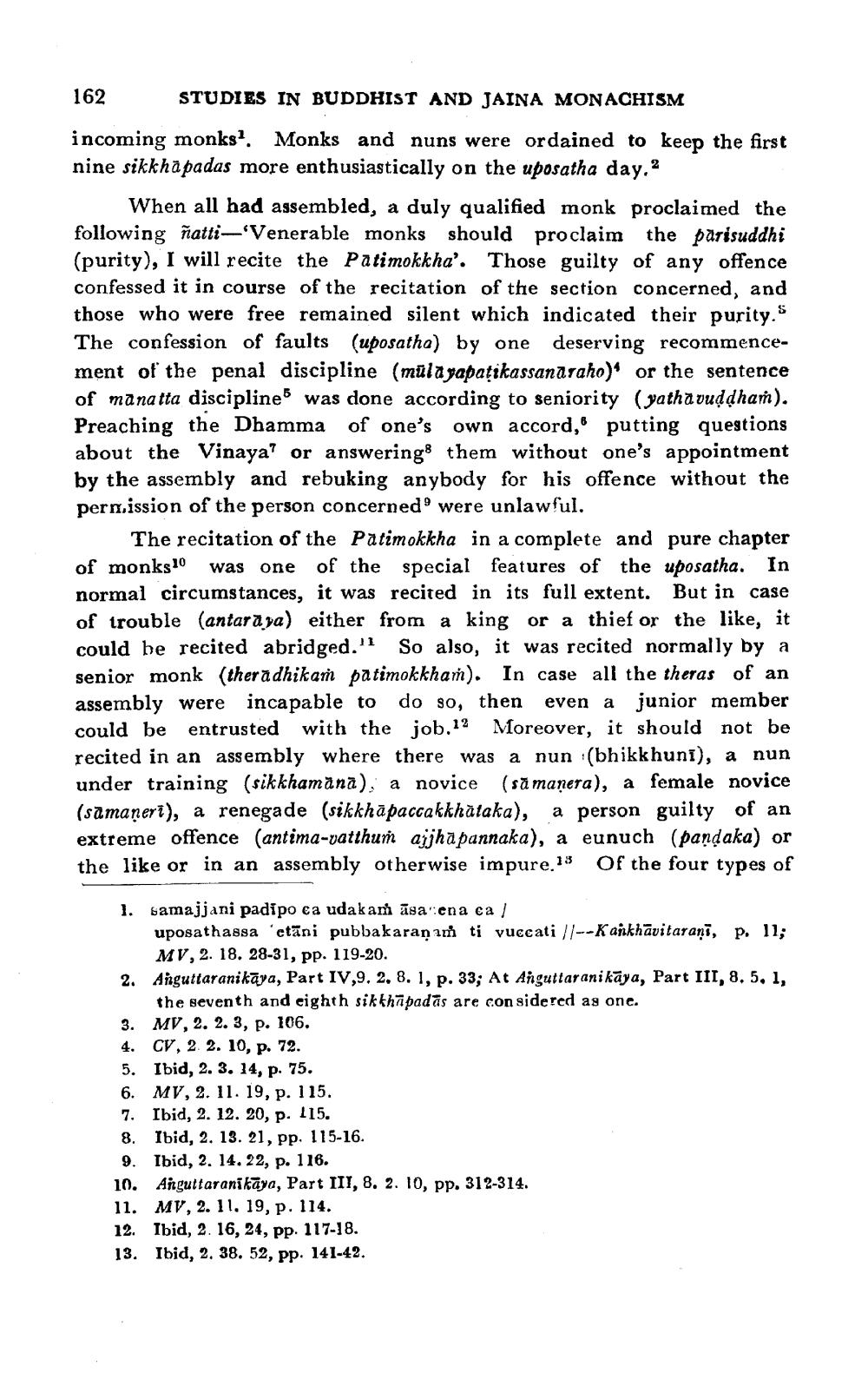________________
162 STUDIES IN BUDDHIST AND JAINA MONACHISM incoming monks? Monks and nuns were ordained to keep the first nine sikkhapadas more enthusiastically on the uposatha day.2
When all had assembled, a duly qualified monk proclaimed the following ñatti—'Venerable monks should proclaim the parisuddhi (purity), I will recite the Patimokkha'. Those guilty of any offence confessed it in course of the recitation of the section concerned, and those who were free remained silent which indicated their purity.S The confession of faults (uposatha) by one deserving recommencement of the penal discipline (mülagapaţikassandraho)" or the sentence of manatta discipline was done according to seniority (yathavuddhań). Preaching the Dhamma of one's own accord, putting questions about the Vinaya? or answering them without one's appointment by the assembly and rebuking anybody for his offence without the pern.ission of the person concerned were unlawful.
The recitation of the Patimokkha in a complete and pure chapter of monks 10 was one of the special features of the uposatha. In normal circumstances, it was recited in its full extent. But in case of trouble (antaraya) either from a king or a thief or the like, it could be recited abridged." So also, it was recited normally by a senior monk (thera dhikam patimokkhaṁ). In case all the theras of an assembly were incapable to do so, then even a junior member could be entrusted with the job.12 Moreover, it should not be recited in an assembly where there was a nun (bhikkhuni), a nun under training (sikkhamana), a novice (să manera), a female novice (samaneri), a renegade (sikkhāpaccakkhataka), a person guilty of an extreme offence (antima-vatthum aijha pannaka), a eunuch (pandaka) or the like or in an assembly otherwise impure.13 Of the four types of
1. Gamajjani padipo ea udakam āsa ena ca !
uposathassa 'etāni pubbakaranın ti vuccati //--Kankhävitarani, p. 11;
MV, 2. 18. 28-31, pp. 119-20. 2. Anguttaranikāya, Part IV,9. 2. 8. 1, p. 33; At Anguttarani kāya, Part III, 8.5, 1,
the seventh and eighth sikkhapadas are considered as one. 3. MV, 2. 2. 3, p. 106. 4. CV, 2. 2. 10, p. 72. 5. Ibid, 2. 3. 14, p. 75. 6. MY, 2. 11. 19, p. 115. 7. Ibid, 2. 12. 20, p. 115. 8. Ibid, 2. 13. 21, pp. 115-16. 9. Ibid, 2. 14. 22, p. 116. 10. Anguttaranikāya, Part III, 8. 2. 10, pp. 312-314. 11. MV, 2. 11, 19, p. 114. 12. Ibid, 2. 16, 24, pp. 117-18. 13. Ibid, 2. 38. 52, pp. 141-42.




